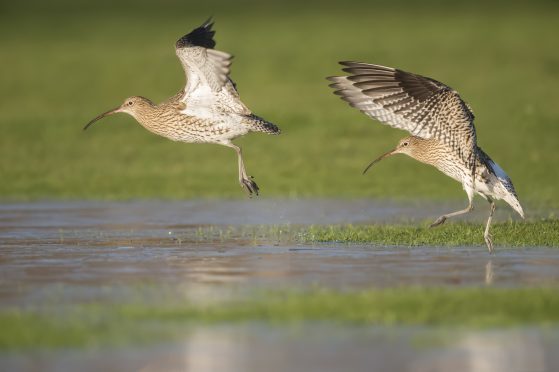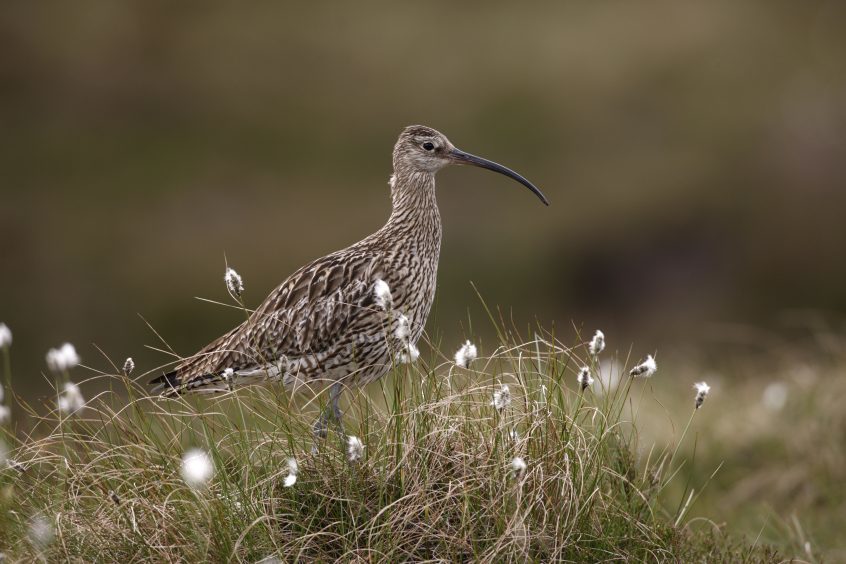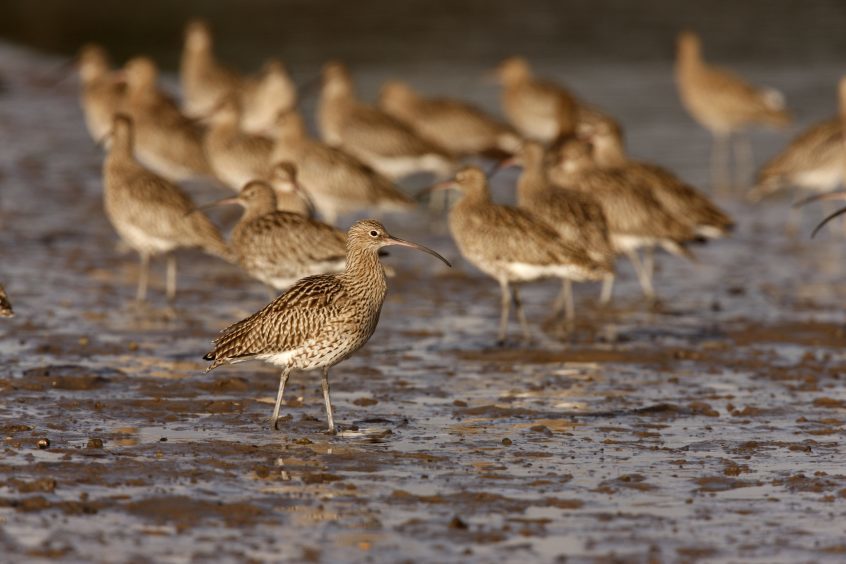The rippling call of the curlew burbled across the mudflats, carrying far in the air like a piece of nature’s sweet music; a gift from the gods and the very echo of life.
It is such a lovely sound and one that invokes memories of languid spring days in the Highlands or being down by the coast in winter.
I brought the curlew into focus with my binoculars here at Culross in West Fife and watched it step tentatively across the oozing mud. Every few seconds it tested the glutinous surface with a light brush of its long curved bill. Somehow with this gentlest of touches it seemed to know that there was nothing worth seeking out beneath. It was almost as if the tip of its bill was tasting and smelling the mud.
Another brief kiss of the ooze and then down plunged its bill like a pair of surgical tweezers, pressed right up to the hilt and quickly pulled out again. A lugworm had been gobbled – this was precision foraging down to a fine art.
As I watched the curlew, or whaup as they are sometimes known, I reflected upon the precarious status of this most unusual looking bird. Over half the Scottish population has been lost over the last 20 years, a victim of the decline in wetland areas where they like to breed. Being a ground nester, I imagine foxes must take a heavy toll on breeding birds too.
It would be a real tragedy if this fall in numbers was to continue, for the liquid bubbling song of a displaying male curlew as he rises and falls in the air on slow beating wings is one of the most evocative sounds of a Scottish spring.
It is a call that rings and echoes throughout our hills and glens, and one which so enchanted the poet Wilfrid Wilson Gibson that he penned the lines: That note – that note! Comes there so clear a call from any throat.
In Gaelic folklore the cry of the curlew has for long been associated with sorrow, and whilst it does have mournful and haunting qualities, for me it is an overwhelmingly warm and welcoming sound.
I moved further along the shoreline at Culross where I came upon a small feeding group of redshanks. Like the curlew, these waders too are in decline – there is so much pressure on so much of our wildlife in our heavily populated land. But I came here to enjoy, not to ponder the worrying, so I cast such thoughts aside and watched the redshanks busy themselves on the mud.
With the sun reflecting upon their bright red legs, it was hard not to feel invigorated by their presence. Even the mudflats shimmered like glorious silver in the soft autumn light. This was a good place to be and the very embodiment of how nature provides optimism and hope – even when there are dark clouds all around.
Info
Curlews breed in upland areas and also on marginal farmland that border such places. They move to the coast in winter – look out for them in estuaries and on both sandy and rocky shores.












